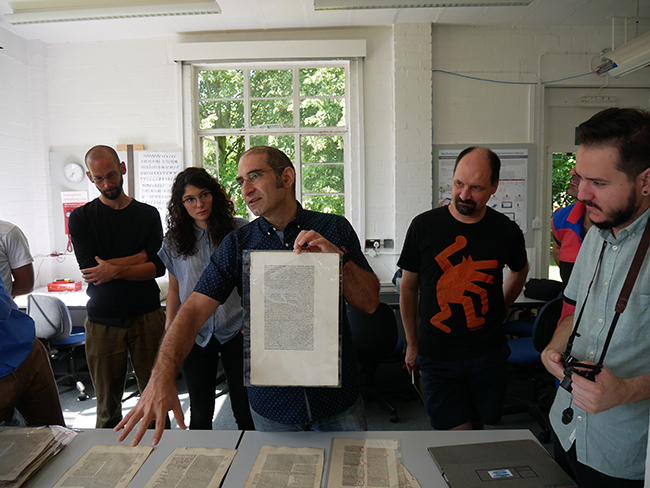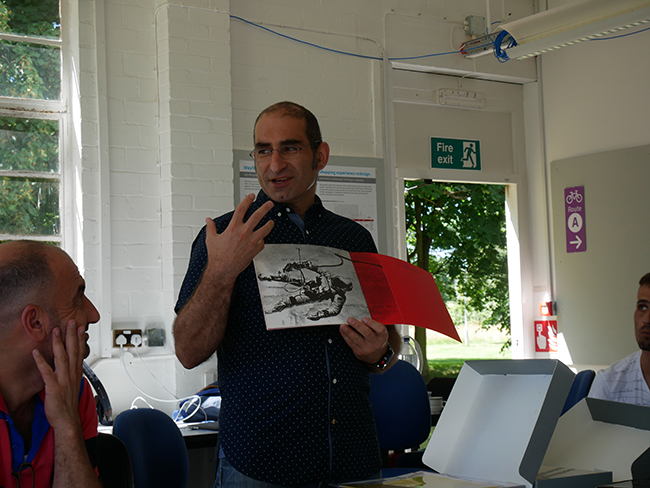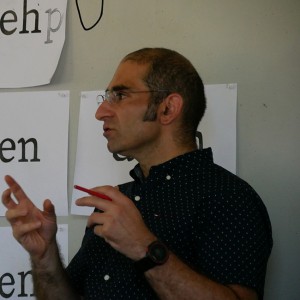- Published on
I am Gerry Leonidas, Associate Professor in Typography at the University of Reading. I spend most of my days talking and writing about typography and typeface design, with students, researchers, and professionals. I work a fair amount on knowledge transfer projects (which means research-based consultancy), and travel frequently to lecture. I am the vice-president of ATypI, the global association of type professionals, and help organise several typographic events. One of my key roles is as the director of the MA Typeface Design, the global reference point for type education.
Did design school help you to understand what you really wanted to do? Can you say that as a child you already knew what you were willing to be or was your search for a path in design thorough and painstaking?
I only studied design for one year as a postgraduate in the Typography Department at Reading. My other qualifications were in Business and in Journalism, so I am overwhelmingly self-taught. Growing up I had clear areas of interest in language, technology, form, design, and craft, which persist in one way or another to this day. I can imagine these interests being met through many careers, but they coalesce in typography and typeface design exceptionally well. I have been very fortunate in having strong interests in rich areas which are developing rapidly during my professional lifetime.
Could you present some arguments why University of Reading is helpful for a type designer?
Reading places students in an environment of accessible expertise in typeface design, with daily access to unique, world-class archives and collections, and an intensely collaborative environment. They can develop a deep appreciation of typeface design, and learn the definitive methodology for designing global scripts — including for scripts they cannot read. Our location in a research-intensive institution, and a department with courses in a range of related disciplines, builds foundations for understanding the discipline of typeface design in a typographic, social, business, and technical context. The research skills that students develop give substance to their skills, and open up career opportunities long after they’ve graduated. And they get to be part of a global community of people who are making important contributions, and get to shape the future of typeface design.


Is it possible to become a professional typographer without a degree? Does a degree give you additional opportunities in UK?
By “typographer” you mean “typeface designer”? If so: yes, to a considerable degree. It is entirely possible to learn the craft within a script you are familiar with, although you may not appreciate fully why you are making a lot of design decisions: imitation and following a genre can disguise the lack of a deeper understanding. A dedicated designer with access to the right resources can develop the key skills themselves to a large degree, but it would be slower and less structured than in a formal educational environment. (And all the older designers that people think of as self-made had, in fact, spent many years building background information that is not available through typical graphic design courses, or in self-taught modes.) However, you cannot reliably develop skills on your own for designing in scripts you are unfamiliar with: there is simply too much information to learn that is not readily available without access to materials and expertise to guide your understanding.
The UK has many typeface designers, but this is a global profession: people may live and work throughout the world, often far away from their clients. But type design is intensely competitive, and a structured education gives a clear advantage. It also confirms that, in most cases, someone can sustain their focus on a long, complex project, and work with others in a productive manner.
The work of what UK type designers would you recommend to check? Generally speaking, whose work do you admire?
I come into contact with many people worthy of recognition, so I will refrain from giving specific names for fear of omitting others. However, I can say that I admire people who are able to combine a deep engagement with the specifics of each project they are working on, while maintaining a sense for wider issues and trends in their profession. I will give just one example: a couple of weeks ago I was in the audience for a panel on Collaborative processes in type design, organised by the Alphabettes at the ICTVC conference. The panelists were able to distill from their practice clear themes for inquiry and present coherent responses, in a manner that contributed to the knowledge of all in the audience. They demonstrated how good designers reflect on their practice, can see the trends in the discipline, and can communicate clearly their deliberations and conclusions. This graduation from practice to a reflective, socially engaged role is timely, and admirable.
